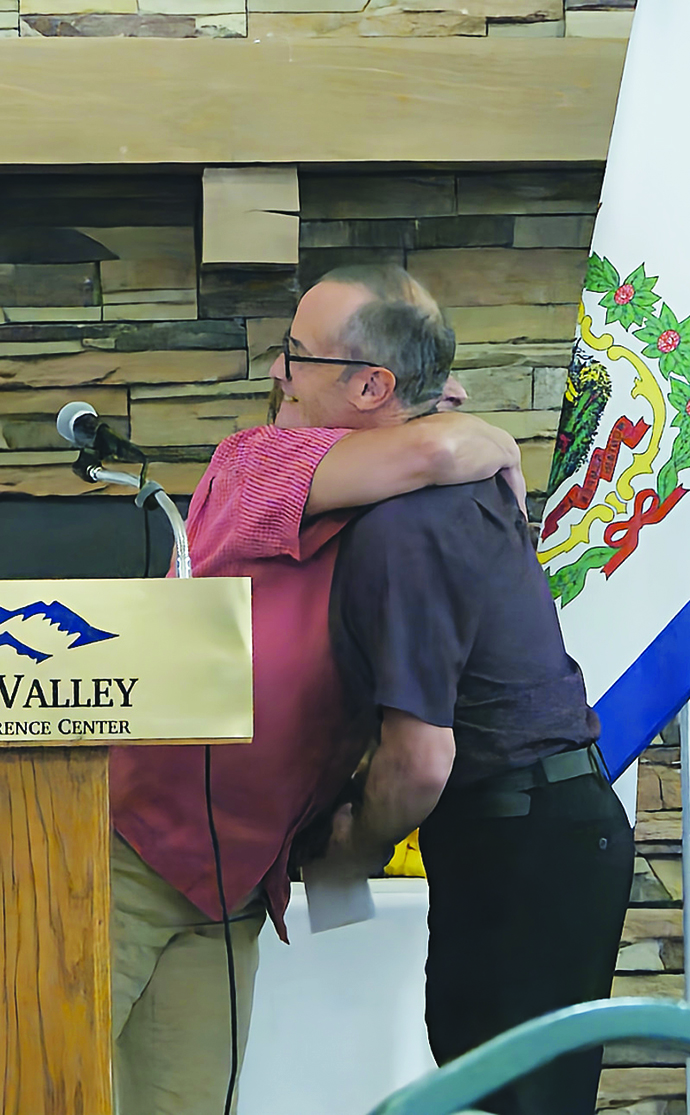By: Lydia Crawley
The Parsons Advocate
Tucker County EMS Director Amanda Simmons provided an update to the Tucker County Commission about the latest developments with the agency’s new ambulance and the implementation of a Lucas CPR assist device funded by the County Commission. The update came as a part of the Commission’s May 8th regular meeting. “We have our new ambulance on the road now,” Simmons said. “It took us almost a month to get it on the road.”
Simmons said the delay in getting the new ambulance on the road was tied to a lack of radio programmers in the area. It is a problem that has been encountered by Emergency Management as well, according to Simmons. Once the new ambulance received the installation of radios, it was able to go into service, according to Simmons. “There are no radio programmers anymore,” Simmons said. “So even though we had the ambulance, we had no radios in it.”
Simmons also informed the Commission that the Lucas CPR assist device that was purchased with funds from the Commission has already been in use by the agency. “We’ve had several cardiac arrests here lately that the Lucas has been used on,” Simmons said. “It has done beautifully. It has just performed amazingly.”
Tucker County Commission President Mike Rosenau explained that the machine is designed to provide the correct compressions and pressure. Rosenau said that the machine was designed to eliminate human error from inconsistent compressions or fatigue that can be associated with extended administering of CPR. “This machine, they hook that to the person,” Rosenau said. “That machine gives the correct compressions, the correct pressure, that they don’t break ribs. This is a staged thing that does the correct thing, just what you need.”
Rosenau went on to state that the machine is able to travel with victims no matter how far away and travels with them. “It is able to go from the scene all the way to the hospital,” Rosenau said. “Even if its in Morgantown.”
Simmons said that with many lost hikers and remote areas in the county, even if her crews have to have a victim extracted, the Lucas system can be attached and continue to administer aid even while being transported in a basket. Simmons also said that in some more remote areas of the county, a crew may have a 20 minute hike to the rig, but with the Lucas, the system can administer aid even during the most strenuous of walks to the ambulance. “Normally we try to do everything in place with a cardiac arrest, but the fact of the matter is that after 20, 30, 40 minutes, you’re exhausted,” Simmons said. “Even if you have firemen coming, if you’re out there and you’re waiting on them and two person, you are going to get exhausted. That machine never gets exhausted.”
According to Simmons, while the device is battery operated, should the battery become exhausted, the machine can be plugged in to an AC outlet. Simmons said that the device also has a second battery that can be inserted in case of emergency that will give the device an extra 45 minutes of power. “It never gets exhausted,” Simmons said. “The battery dies, you plug it in. Or how about this, we have an extra battery in them and you just pop it in and it goes another 45 minutes.”
Within Tucker County, Tucker County EMS is one of two entities to employ the Lucas system, according to Rosenau, with Canaan Valley being the first to purchase the CPR assist system in the county. It was from Canaan Valley that the County Commission first learned of the device and the benefit it would have to County, Rosenau said.



